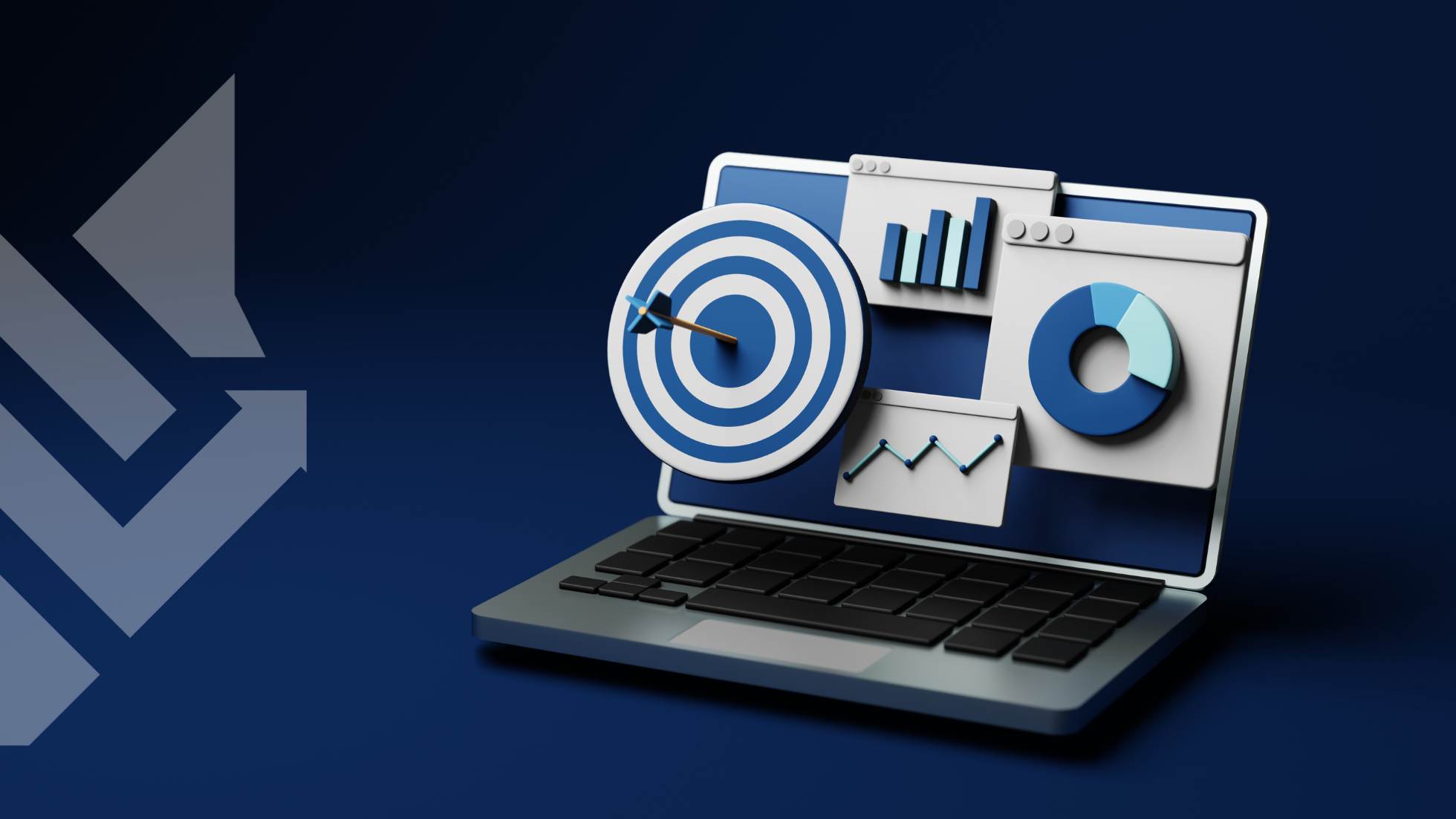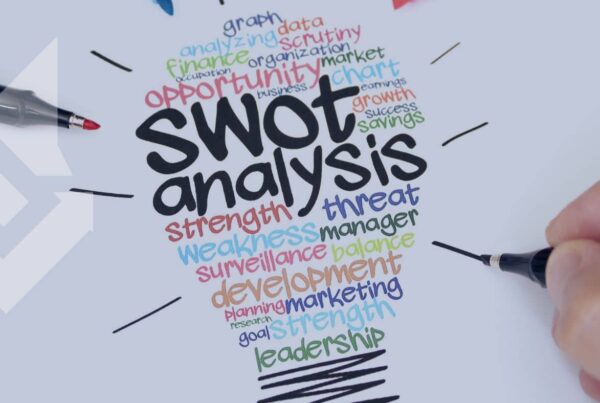Last updated on December 9th, 2025 at 03:20 pm
A digital marketing strategy framework is the blueprint that guides your business away from unpredictable results and toward sustainable growth. Are your marketing efforts feeling scattered? You’re posting on social media, sending emails, maybe even running a few ads, but it feels more like throwing spaghetti at the wall than a clear plan for growth. This is a common frustration for businesses, and it’s a clear sign that a crucial piece is missing: a cohesive plan.
This guide will break down exactly what a digital marketing strategy framework is and give you a no-nonsense, 7-step process to build your own. This is the foundation that turns random activities into a predictable engine for growth, bringing clarity to your efforts and purpose to every dollar you spend.
Contents
What Exactly Is a Digital Marketing Strategy Framework?
Think of a digital marketing strategy framework as the blueprint for your marketing. It’s a structured plan that outlines who you’re trying to reach, how you’ll reach them, and what you want them to do. It ensures every marketing dollar and minute you spend has a distinct purpose and moves your business closer to its goals. Without one, you’re essentially navigating without a map, hoping to stumble upon your destination.
A well-built framework is crucial for any business that wants to grow in the digital age. It provides a clear structure that helps you:
- Bring Clarity and Focus: It ends the cycle of random acts of marketing and focuses your resources on what truly matters.
- Align Your Team: It gets everyone on the same page, from sales to content creators, all working toward a common set of objectives.
- Make Results Measurable: It establishes clear metrics for success, so you know what’s working and what isn’t.
- Prevent Wasted Resources: It stops you from pouring time and money into channels and tactics that don’t deliver a return on investment.
A proper digital marketing strategy framework is the difference between being busy and being productive.
Common Digital Marketing Frameworks You Should Know
Before we build our practical 7-step plan, it’s helpful to know a few of the famous models that influence modern marketing strategy. You might see names like:
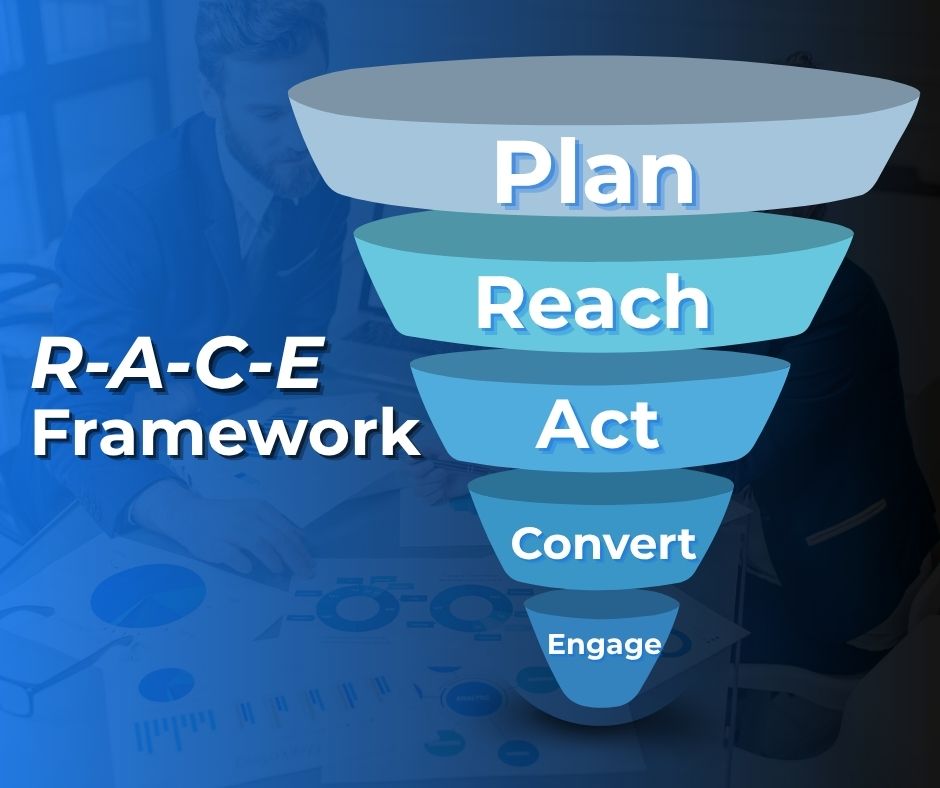
The RACE Framework
This practical model is popular because it focuses on the full customer lifecycle, including what happens after the sale. It’s an action-oriented framework for planning and measuring results.
Engage: Building long-term relationships with customers to create loyalty and repeat business.
Reach: Building awareness and driving traffic to your digital properties, like your website and social media pages.
Act: Persuading visitors to take the next step or interact with your content, like downloading a guide or subscribing to a newsletter.
Convert: Turning those interested prospects into paying customers. This is where the sale happens.
The Marketing Funnel
This is the classic model illustrating a customer’s linear path from stranger to customer. It’s simple and helps visualize the core stages of a purchasing decision. It breaks down into four phases:
Action: They make a decision and become a customer by making a purchase or signing up.
Awareness: A person first discovers your brand, often through ads, social media, or search engines.
Interest: Their curiosity is piqued, and they begin to actively learn more by visiting your website or reading your content.
Consideration: They begin to evaluate your solution against others, thinking, “Is this the right choice for me?”
The Flywheel Model
This modern, customer-centric model sees growth not as a linear funnel, but as a continuous cycle. The philosophy is that happy customers create momentum that fuels new growth by spreading the word. The key phases are:
Delight: Providing an outstanding experience that turns customers into promoters who then help you attract new customers.
Attract: Drawing people in with valuable content and helpful information, not just ads.
Engage: Building lasting relationships by providing insights and solutions that align with their goals.
Your 7-Step Digital Marketing Strategy Framework for Growth
Building your framework doesn’t have to be an overwhelming, month-long project. You can lay a strong foundation by following these seven logical steps. Each step builds on the last, creating a comprehensive and powerful plan that guides your business toward its most important goals. Let’s build your blueprint.
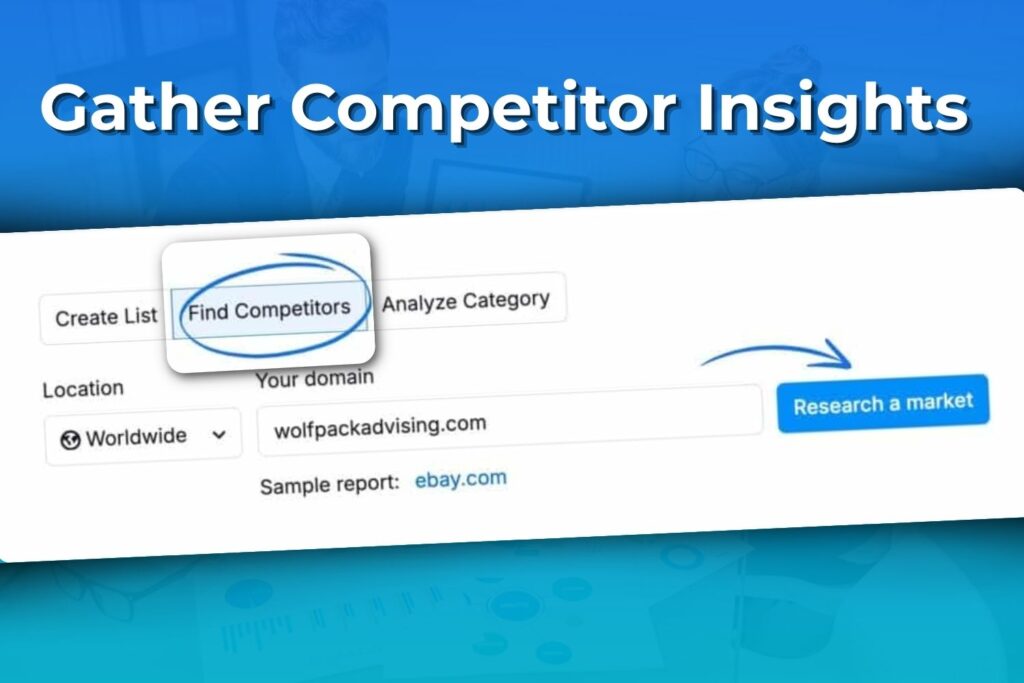
1) Know Your Starting Point (The Opportunity Audit)
You can’t plan a route without knowing your current location. The first step in any effective digital marketing strategy framework is an honest and thorough assessment of your current marketing performance. This audit isn’t about judgment; it’s about gathering data to make informed decisions. It helps you identify hidden opportunities and understand what is already working.
Take a clear-eyed look at your existing digital footprint. Open up your analytics tools and start asking simple questions. Look at your website traffic over the last six months. Where do most of your visitors come from? Which pages are the most popular? Check your social media insights. What types of posts get the most engagement?
Make a list of your top three direct competitors and review their online presence. What are they doing well on social media? What keywords do they seem to be ranking for on Google? This initial analysis forms the baseline for your entire strategy.
2) Define Your Ideal Customer (Audience & Segmentation)
Your marketing will never be effective if you’re trying to talk to everyone at once. The most successful brands speak directly to a specific type of person. This step is about getting crystal clear on who your ideal customer is, not just on a surface level, but on a human level. A customer-centric approach is vital for any successful digital marketing strategy framework.
Go beyond basic demographics like age and location. Your goal is to understand your customer’s world. What are their biggest frustrations and challenges? What goals are they trying to achieve that your product or service helps with? What are their values? If you’re not sure, talk to them! Interview a few of your best customers or send a simple survey to your email list.
Use these insights to create a simple customer persona—a fictional character who represents your ideal buyer. Give them a name and a story. Every marketing decision you make from now on should be made with this person in mind.
3) Set Clear, Measurable Goals (Your SMART Objectives)
A plan without a destination is just a wish. Your framework needs a clear, defined finish line. Vague goals like “increase sales” or “get more followers” aren’t helpful because they don’t give you a target to aim for or a way to measure your progress. The goals you set are the engine of your digital marketing strategy framework.
Use the SMART goal-setting methodology to bring clarity to your objectives. Every goal must be:
- Specific: What exactly do you want to achieve?
- Measurable: How will you track progress and know when you’ve succeeded?
- Achievable: Is this goal realistic given your resources and timeline?
- Relevant: Does this goal directly support your overall business objectives?
- Time-bound: When will you achieve this goal by?
For example, a vague goal is “get more leads“. A SMART goal is “Increase qualified leads from our website’s contact form by 20% over the next 90 days by promoting our new downloadable guide.“
4) Map Your Reach and Attraction Strategy
Now that you know who you’re talking to and what you want to achieve, how will new customers discover your brand for the first time? This part of the digital marketing strategy framework focuses on top-of-funnel activities. It’s about being present in the places where your ideal customer is already looking for information or solutions.
Don’t try to be everywhere at once. Choose one to three primary channels where you can consistently show up and provide value. The channels you choose should be based on where your ideal customer spends their time.
- Search Engine Optimization (SEO): If your customers are actively searching on Google for solutions you provide, SEO is critical. This involves creating content on your website that answers their questions.
- Content Marketing: This often goes hand-in-hand with SEO. Content writing involves creating valuable blog posts, videos, or guides that establish your authority and attract your target audience.
- Social Media: Which platforms do your customers use? Focus your energy there, sharing content that is helpful, entertaining, and engaging, rather than just promotional. Social media marketing… it’s crucial to tailor your approach based on the unique dynamics of each platform. Utilise tools like analytics to understand your audience’s preferences, craft visually appealing posts, leverage trending hashtags, and engage actively with your followers to build a strong online presence.
5) Create Your Engagement and Conversion Path
Once someone discovers you, what happens next? This step is about designing a seamless journey that guides a potential customer from being a casual visitor to a qualified lead. A clunky, confusing website or a lack of clear direction can stop a potential sale dead in its tracks. A seamless user journey is a non-negotiable component of a modern digital marketing strategy framework.
Imagine you’re welcoming a visitor to your website for the very first time. Imagine their journey as they land on your homepage. What catches their attention? Is your site inviting and intuitive, with clear, easy-to-follow navigation? Can they instantly grasp the value your website offers?
Imagine this journey as more than just a series of clicks; it’s about guiding them thoughtfully from curiosity to connection. To transform a visitor into a lead, offer them something genuinely valuable like a small gift in exchange for their email. This “lead magnet” could be a helpful checklist, an informative ebook, an engaging webinar, or an enticing discount code which is something that directly addresses their needs. Along the way, make their path crystal clear. Use strong, friendly calls-to-action (CTAs) like “Download the Guide” or “Sign Up Now.” These prompts guide them precisely, ensuring a smooth, engaging, and rewarding journey.
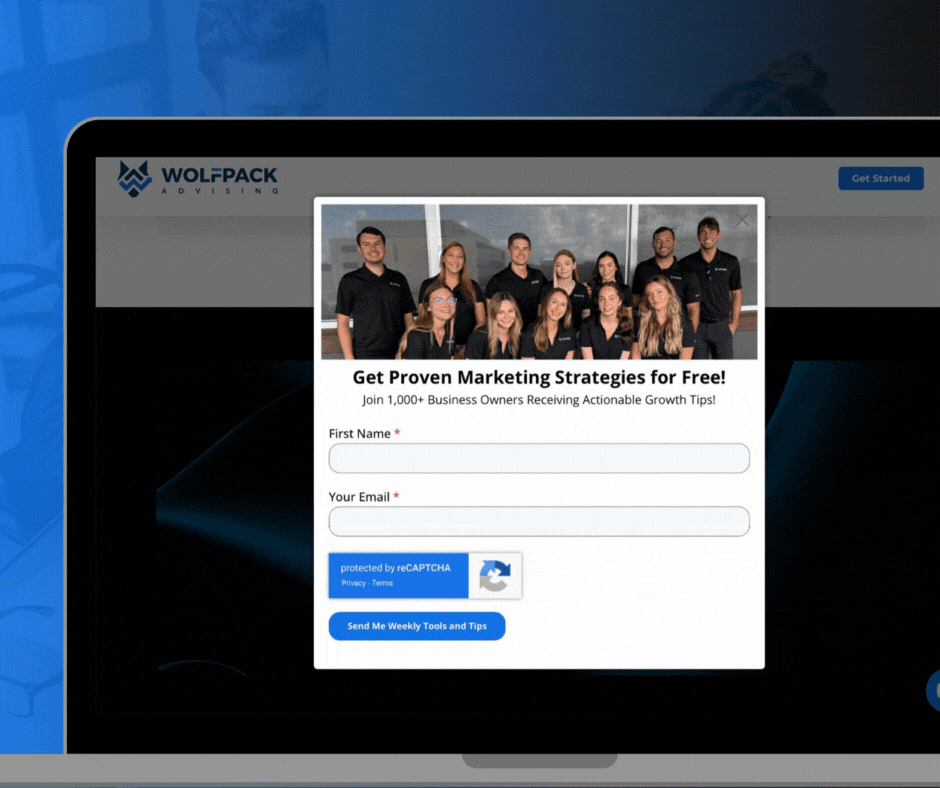
6) Build Your Loyalty and Advocacy Loop
Your marketing efforts shouldn’t stop the moment someone makes a purchase. The most profitable businesses know that keeping an existing customer is far more cost-effective than acquiring a new one. The best digital marketing strategy framework includes a plan for turning one-time buyers into loyal fans and advocates for your brand.
Think about the post-purchase experience. How can you continue to provide value and delight your customers?
- Email Marketing: A simple welcome email sequence for new customers can make them feel valued and teach them how to get the most out of their purchase.
- Excellent Customer Service: A positive support experience can turn a frustrated customer into a lifelong advocate.
- Loyalty Programs: Consider offering special perks or early access to new products for your best customers to encourage repeat business and referrals.
7) Measure, Analyze, and Evolve
A modern digital marketing strategy framework is not a static document you create once and file away. It’s a living, breathing system that needs to be monitored and adjusted over time. The digital landscape changes quickly, and your ability to adapt based on real data is what will keep you ahead of the competition.
For each step of your framework, assign a few key performance indicators (KPIs) to track.
- For Reach: Track metrics like organic website traffic, social media reach, and keyword rankings.
- For Conversion: Track your lead magnet download rate and contact form submissions.
- For Loyalty: Track your customer churn rate, repeat purchase rate, and customer lifetime value.
Create a simple dashboard (even a spreadsheet will do) to monitor these KPIs. Set aside time each month to review the data. What’s working better than expected? What’s underperforming? Use these insights to double down on what works and adjust what doesn’t. This cycle of measuring and evolving is what drives long-term, sustainable growth.
Conclusion
A digital marketing strategy framework turns chaos into clarity. It transforms random acts of marketing into a purposeful, integrated system designed to achieve your business goals. By providing a clear structure, it empowers you to make smarter decisions, measure what truly matters, and create a sustainable engine for growth.
Building your own framework is a powerful step, but you don’t have to do it in isolation. If you want an experienced guide to help you build a robust strategy, analyze your opportunities, and lead your business to its next stage of growth, our Pack is here to help. Schedule a free, no-obligation strategy call, and let’s build your roadmap to success together.

